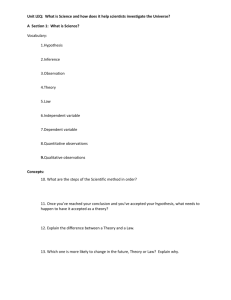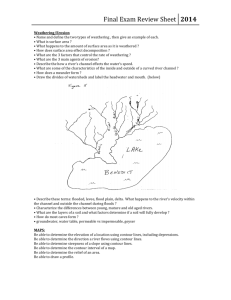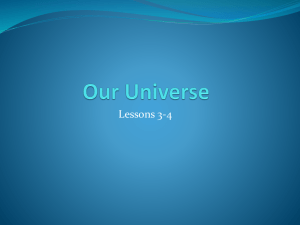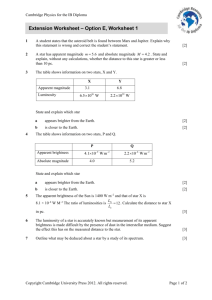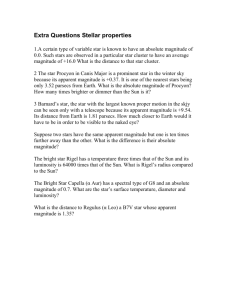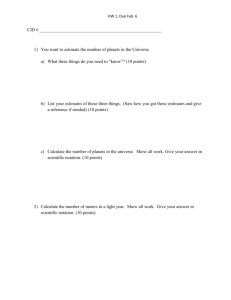Name_____________________________________Key__ Middle
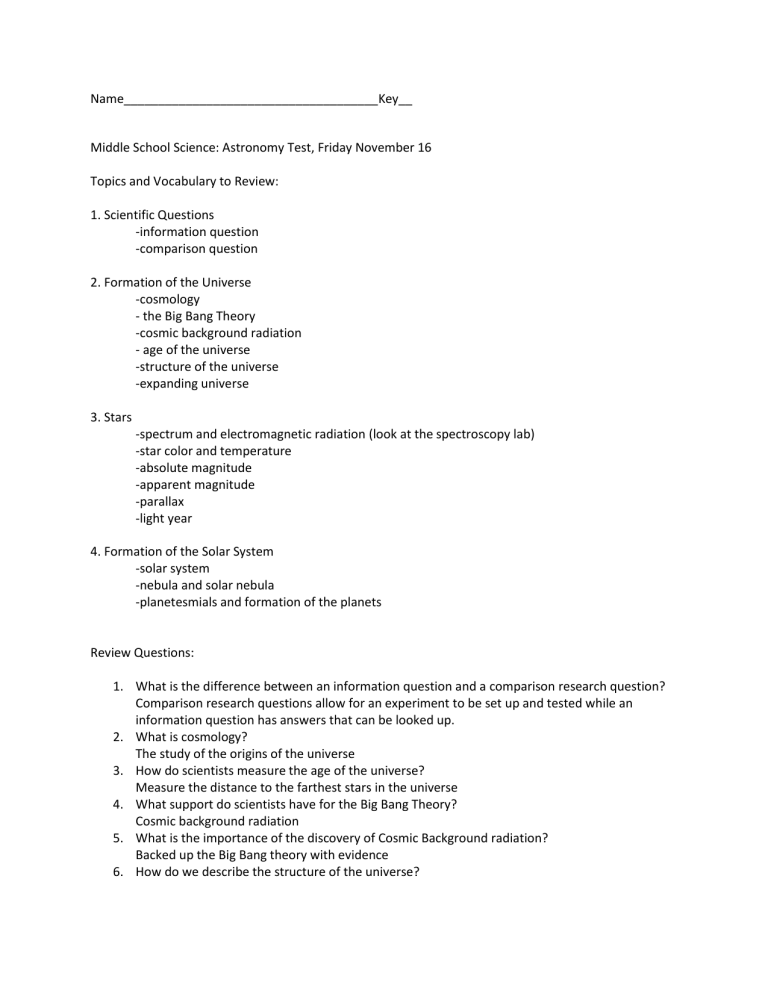
Name_____________________________________Key__
Middle School Science: Astronomy Test, Friday November 16
Topics and Vocabulary to Review:
1. Scientific Questions
-information question
-comparison question
2. Formation of the Universe
-cosmology
- the Big Bang Theory
-cosmic background radiation
- age of the universe
-structure of the universe
-expanding universe
3. Stars
-spectrum and electromagnetic radiation (look at the spectroscopy lab)
-star color and temperature
-absolute magnitude
-apparent magnitude
-parallax
-light year
4. Formation of the Solar System
-solar system
-nebula and solar nebula
-planetesmials and formation of the planets
Review Questions:
1.
What is the difference between an information question and a comparison research question?
Comparison research questions allow for an experiment to be set up and tested while an information question has answers that can be looked up.
2.
What is cosmology?
The study of the origins of the universe
3.
How do scientists measure the age of the universe?
Measure the distance to the farthest stars in the universe
4.
What support do scientists have for the Big Bang Theory?
Cosmic background radiation
5.
What is the importance of the discovery of Cosmic Background radiation?
Backed up the Big Bang theory with evidence
6.
How do we describe the structure of the universe?
Structure of the universe can be described as a loaf of raisin bread (as it rises and bakes, the raisins move apart)
7.
What is the difference between stars’ apparent motion and their actual motion?
Apparent motion is how the star appears to be moving in the sky, whereas actual motion is the movement of the star in the universe
8.
What is the difference between absolute and apparent magnitude of a star?
Apparent magnitude is how bright a star looks (affected by the distance from earth to the star, as well as brightness, and temp), absolute magnitude is the actual brightness of the star
9.
What can scientists tell about a star from its spectrum?
Scientists can determine the chemical makeup of the star from its absorption or emission lines
10.
Why are colors missing from the spectrum of a star?
Colors are missing from the spectrum of a star because they indicate what wavelengths are being absorbed, showing what the chemical makeup of the star is.
11.
What does the spectrum for white light look like?
Continuous rainbow (ROYGBIV)
12.
Which colors have longer wavelengths? Which colors have shorter wavelengths? Where do colors fall on the electromagnetic spectrum? Which colors have more energy?
Violet has the shortest wavelengths while red has the longest. Colors fall in the middle of the spectrum, within a narrow range in which our eyes can detect. Violet has the most energy.
13.
What is a parallax?
Parallax is the apparent shift in position of a star based on its position relative to other stars
14.
What unit of measurement do astronomers use to measure how far away stars are?
Light year (measure of distance light travels in one year)
15.
What is a nebula? What forces act upon a nebula to give it its shape?
A nebula is a cloud of gas and dust. The forces of gravity and pressure help to give it its shape.
16.
How do planetesimals form planet? What might a planetesimal form other than a planet?
Planetesimals form planets when their gravitational pull attracts other pieces of dust and debris, making the planetesimal grow larger. Planetestimals can also form asteroids and comets.
17.
How did our sun form?
Our sun formed from the hot gasses at the middle of the solar nebula. The gasses spun and got closer, eventually forming nuclear fusion reactions between hydrogen atoms turning them to helium and releasing energy.

